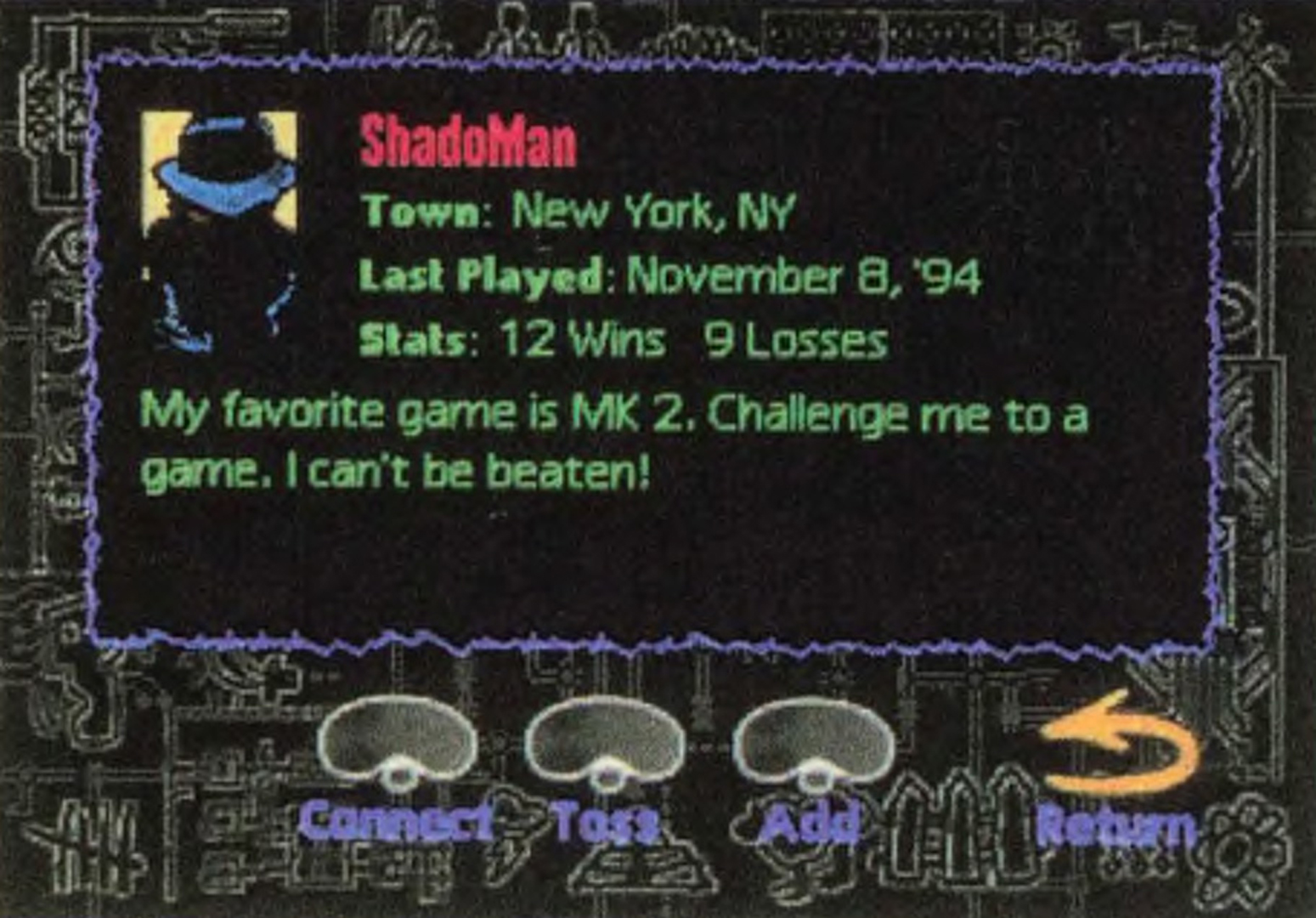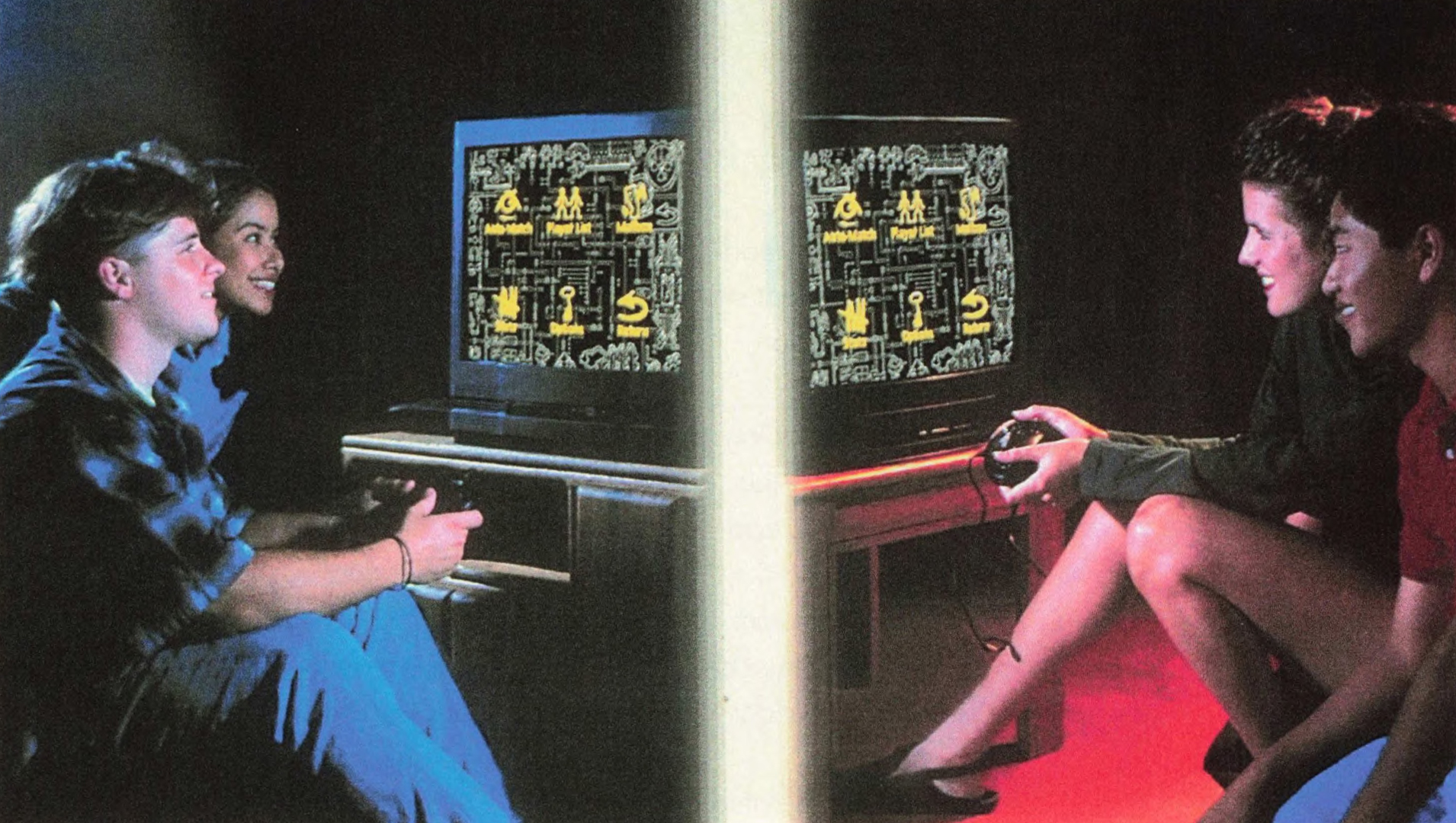“XBAND Video Game Network” by Miller
Conference:
- SIGGRAPH 1995
-
More from SIGGRAPH 1995:


Type(s):
Entry Number: 14
Title:
- XBAND Video Game Network
Program Title:
- Interactive Entertainment
Presenter(s):
Project Affiliation:
- Catapult Entertainment
Description:
The XBAND Video Game Network is the only multi- player video game modem and network that allows 16-bit cartridge game players to play their favorite video games against other opponents in real time over a telephone line. When it went online in November 1994, the network supported the Sega Genesis platform. Now, it also supports Super Nintendo. Unlike other networked game devices, XBAND is designed to support all of today’s popular multi-player video games without modification.
XBAND, created by Catapult Entertainment, links together video games from around the U.S. Participants’ equipment requirements are simple: a Sega or Super Nintendo and a telephone line. They connect to the network via a modem that plugs into the cartridge slot, and then the cartridge plugs into the modem. The modem is “intelligent.” It incorporates a chip that modifies execution of a game cartridge to make existing games that were never intended to be played over distributed systems work through the modem. The modem also includes a ROM-based operating system with a simple user interface, mini-email (with Internet access) for kids, and two online newspapers that are downloaded every time you connect.
To use XBAND, the participant simply instructs the modem to connect to Catapult’s server, and Catapult finds another opponent of the same skill level somewhere in the U.S. who wants to play the same game at the same time. Then the server directs one of the modems to call the other. Of course, most parents sign up their kids for local calls only, but all users can receive long- distance calls so from time to time even local-only modem users get to play someone far away.
When players connect to the XBAND Network, they receive game playing tips, personal statistics, ranking information, and updates on other players and competitions organized through the network. The network matches players to an available competitor of equal skill level or a competitor of their choosing. Players are identified by a unique icon and “handle” to protect their privacy and anonymity.
Players also have the ability to send and receive messages through the network’s XMAIL system and XBAND’s online newspaper, bandwidth, which provides the latest updates on the video-game scene and other entertainment and sports news.
Parents can set controls on the number of hours or times of day their children can play on the network, and they can establish long-distance calling restrictions. Parental controls can be updated any time. All access connections to the XBAND Network are local calls unless long-distance playing has been specified by a player and/or parent.
XBAND communication laten- cy is low enough (<50 milliseconds) that the response delay in even a coast-to-coast video game is barely perceptible by an expert human game player (New York to Los Angeles latency is about 35 milliseconds through copper or fiber optics). For comparison, Internet latency ranges from 200 milliseconds to more than one second, so Internet games such as NetTrek need to allow for arbitrary delays. Online services connect through x.25 packet-data networks that have latencies between 250 milliseconds and 1.5 seconds.
Additional Images:







